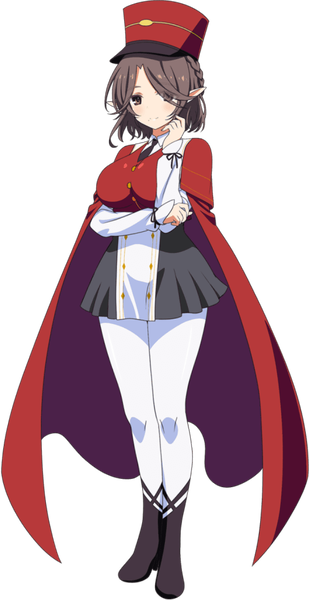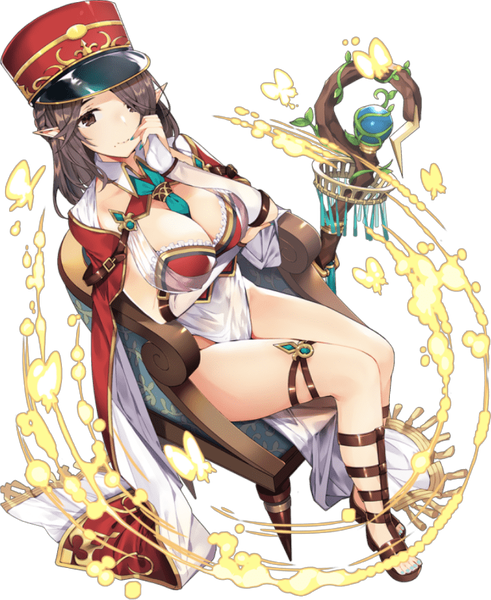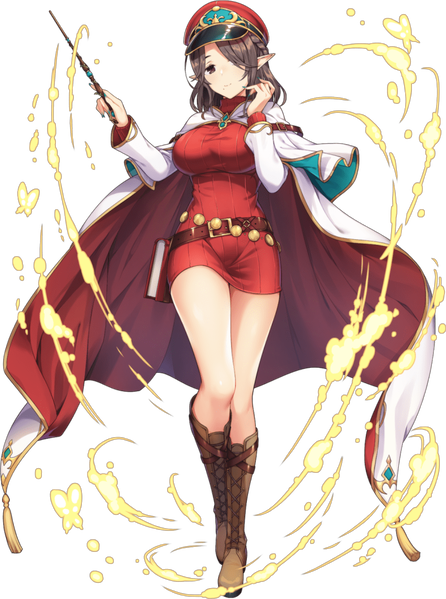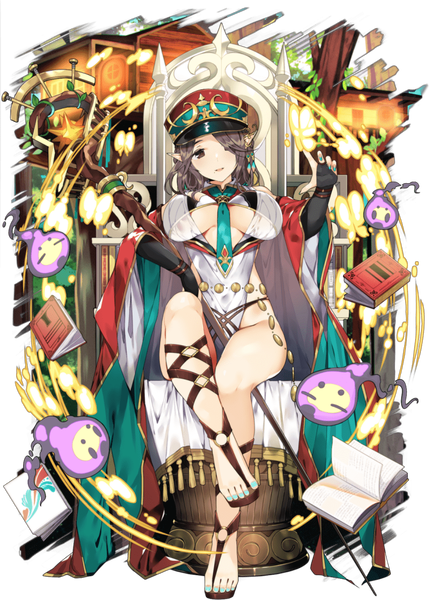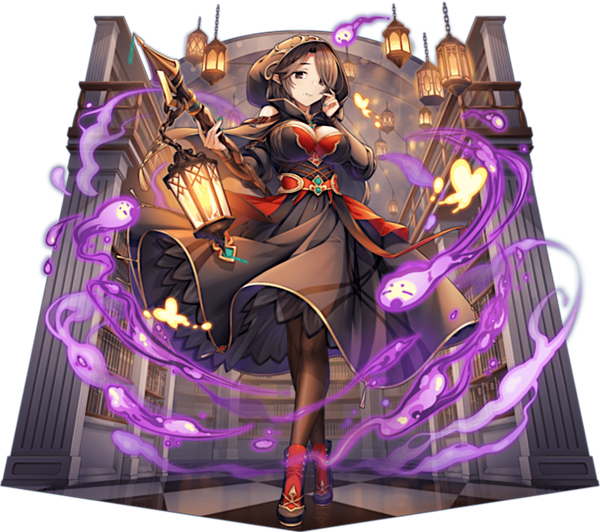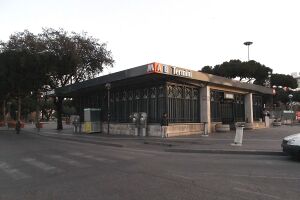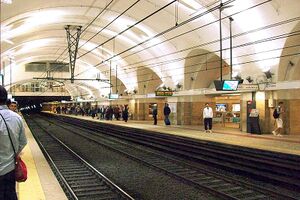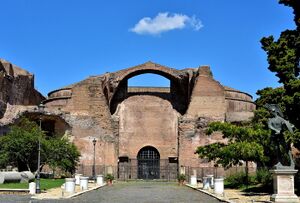Termini
| Termini | |||||
|---|---|---|---|---|---|
| Japanese Name | テルミニ | ||||
| Weapon | |||||
| Race | Elf | ||||
| Nationality | |||||
| Birthday | February 10 | ||||
| Constellation | Aquarius | ||||
| Talents | Able to use ancient magic | ||||
| Likes | Discussions, Reading, Gathering Knowledge | ||||
| Dislikes | Forgetting things she learned | ||||
| Strengths | Knowing everything | ||||
| Weaknesses | Somewhat outdated when it comes to modern things | ||||
| Hobbies | Enjoying going to the arena | ||||
I'm the vessel of an ancient alchemist's soul. I've been reincarnated countless times and have lived multiple lifetimes. You know, your basic concept of everlasting life...? But physically, I'm just your average girl.
Layers
| Icon | Title | Release Date | Where to Obtain |
|---|---|---|---|
| [Girl Who Knows All] Termini | 2021 December 10 (EN) | [Training Camp - Termini] Event Reward | |
| [Observer] Termini | 2021 November 1 (EN) | [Snow and Ice Neverland] Pick Up Gacha, Premium Gacha | |
| [Teacher on Holiday] Termini | 2022 June 30 | [Necro Princess in the Underground Crypt] Pick Up Gacha, Premium Gacha | |
| [Eternal Soul] Termini | 2022 January 11 (EN) | [Sage of Wisdom and the Squire of Annihilation] Limited Gacha | |
| [The Alchemist of Darkness] Termini | 2022 August 31 | [Welcome to Gunma Land] Pick Up Gacha, Premium Gacha |
Owned Skills
Trivia
- Termini's birthday is the opening date of Rome Metro in 1955, and Termini station is one of the available stops.
- The building in the background of [Eternal Soul] is the Baths of Diocletian, they were the largest of the imperial baths in Ancient Rome.
- Termini's alchemy and immortality theme is based off the Porta Alchemica, also known as the Alchemy Gate or Magic Portal, is a monument built between 1678 and 1680 by Massimiliano Palombara, marquis of Pietraforte, in his residence, the villa Palombara, which was located on the Esquiline hill, near Piazza Vittorio, in Rome.
- The name of Termini's current body host is Aurelia. Aurelia is a reference to Valle Aurelia station (Stazione di Valle Aurelia). It is the railway stop serving the Aurelio and Trionfale districts of the city of Rome. The stop is located along the Rome-Capranica-Viterbo railway and is the branch point of the line for Vigna Clara.
- Termini's liking for arenas references the many Roman amphitheaters in Rome, Italy.
- The interior background in [The Alchemist of Darkness] is a reference to the Biblioteca di archeologia e storia dell’arte, Italy's largest library on art and archaeology. The catalogue includes more than 370.000 books, with many graphic examples and rare manuscripts dating back to the 16th and the 17th centuries.
Counterpart
Termini is an underground station of the Rome Metro. The station was inaugurated on 9 February 1955 as a station on Line B, and later became an interchange with Line A. The station is found in Piazza dei Cinquecento, under the Roma Termini railway station. Together, the two stations form the main public transport hub in the city. Termini is currently the only station in the Rome Metro system to serve both Lines A and B.
When it was inaugurated, Termini was the terminus of the only section of the Rome underground line, which connected Termini station with the EUR district. The "rapid" trains directed to Lido di Ostia (the current Rome-Lido railway) also terminated at Termini, with a frequency of two trains per hour. At the time, the tracks of the current station of line B were dedicated one for the Termini-Laurentina Metro (currently a quay towards Laurentina), the other for the rapid Termini-Lido. The sorting of the trains was regulated by two switches places where today the station ends, on the Cavour sideand controlled by a control room (later demolished) located near the quay in the direction of Laurentina. Wikipedia
Directly above Termini metro is the Roma Termini (Stazione Termini), the main railway station of Rome, Italy. It is named after the district of the same name, which in turn took its name from ancient Baths of Diocletian (in Latin, thermae), which lie across the street from the main entrance. Termini is also the main hub for public transport inside Rome. Two Rome Metro lines (A and B) intersect at Termini metro station, and a major bus station is located at Piazza dei Cinquecento, the square in front of the station. However, the main tram lines of the city cross at Porta Maggiore, some 1,500 metres east of the station.
The current building was designed by the two teams selected through a competition in 1947: Leo Calini and Eugenio Montuori; Massimo Castellazzi, Vasco Fadigati, Achille Pintonello and Annibale Vitellozzi. It was inaugurated in 1950. The building is characterized by the linear lobby hall, a tall space of monumental dimensions. This great hall is fronted by full height glass walls, and is covered by a concrete roof that consists of a flattened and segmented arch, a modernist version of a barrel vault from a Roman bath.Wikipedia
The Baths of Diocletian (Terme di Diocleziano) were public baths in ancient Rome. Named after emperor Diocletian and built from 298 AD to 306 AD, they were the largest of the imperial baths. The project was originally commissioned by Maximian upon his return to Rome in the autumn of 298 and was continued after his and Diocletian's abdication under Constantius, father of Constantine.
The baths were open until c. 537, when the Ostrogoths cut off aqueducts from the city of Rome. The site houses the Basilica of Santa Maria degli Angeli e dei Martiri, built within the ruins in the 16th century, as well as the Church of San Bernardo alle Terme and part of the National Roman Museum.
The museum is located in what is known as "Michelangelo's Cloister" and other buildings that were part of the Carthusian monastery as well as several halls south of the eastern palestra. The former main entrance hall of the museum connects the 16th-century outer garden around a large Krater used as a fountain with the cloister. The Epigraphic Museum is located in modern premises. The prehistoric exhibits are on the first floor of the cloister colonnade. The cloister itself exhibits numerous pieces of statuary. The church of San Bernardo alle Terme uses one of only two circular buildings in the rectangular enclosure of the baths, flanking its southwestern wall. Between these two structures, a large exedra used to exist as part of the same wall. This is now occupied by Piazza della Repubblica. Wikipedia
Map
Gallery
- Pages using Tabber parser tag
- Pages using DynamicPageList3 parser tag
- Weapon Staff
- Elf
- Verforet
- Aquarius
- Element Blow
- Element Light
- Element Dark
- Train Knights
- Italy

